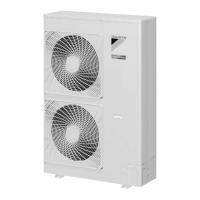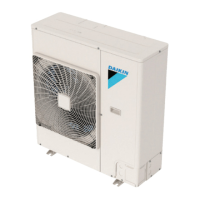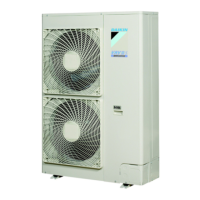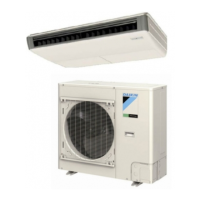
Do you have a question about the Daikin RZQ125B8V3B and is the answer not in the manual?
| Brand | Daikin |
|---|---|
| Model | RZQ125B8V3B |
| Category | Air Conditioner |
| Language | English |
Important warnings regarding installation safety, electric shock, and fire hazards.
Cautions about installation practices, potential damage, and specific operating conditions.
Strict cautions for handling R-410A refrigerant, keeping the system clean, dry, and tight.
General notes on installing indoor and outdoor units, and pipe branching kits.
Details and listing of accessories included with the unit for installation.
Instructions on how to safely handle the unit during installation and transport.
Criteria for choosing a suitable installation location for optimal performance and safety.
Required clearances for non-stacked outdoor unit installations.
Required clearances for stacked outdoor unit installations.
Required clearances for multiple-row outdoor unit installations.
Method for securing the unit to prevent falling during installation.
Proper installation and disposal of drain piping to prevent water leakage.
Specifies the correct pipe sizes for liquid and gas lines based on model and application.
Guidance on selecting appropriate copper piping material and temper grade.
Tables detailing maximum allowable piping lengths and height differences.
Precautions against mixing foreign substances and handling refrigerant leaks.
Recommended tools for R-410A installation, including vacuum pumps.
Guidelines for reusing existing refrigerant piping, including cleaning and checks.
Specific safety measures for R-410A piping work, including handling and vacuuming.
Procedures and cautions for using the unit's stop valves.
Guidance on handling valve covers and service ports to prevent leaks.
Advice on connecting field piping and insulation to prevent contact and damage.
Dimensions for flare processing and recommended tightening torques.
Importance of nitrogen blow during brazing to prevent oxidation and ensure system integrity.
When and how to install traps in riser piping to prevent oil return issues.
Steps and diagram for setting up vacuum and leak testing equipment.
Step-by-step procedure for conducting a leak test on the installed piping.
Important notes on charging refrigerant, especially R-410A, in liquid state.
Tables and guidelines for calculating additional refrigerant based on piping length.
Detailed steps for performing the pump-down operation to recover refrigerant.
Guidelines for dismantling units and disposing of refrigerant, oil, and parts.
Requirements for authorized electricians, compliance with codes, and high voltage precautions.
Specific precautions for wiring indoor/outdoor units, power supply, and magnetic switches.
Instructions on securing wiring, using protection sleeves, and forming wires.
Guidelines for using round crimp-style terminals and tightening torque for screws.
Information on circuit amps, fuses, wire types, and earth leakage breakers.
A checklist of essential checks before performing the test run.
Step-by-step guide to perform the test run and check unit operation.
Important considerations and troubleshooting tips during the test run.
Guidance on identifying and resolving common error codes and installation issues.
Explanation of symbols used in the wiring diagrams.
List of component identifiers and their descriptions used in the wiring diagram.











